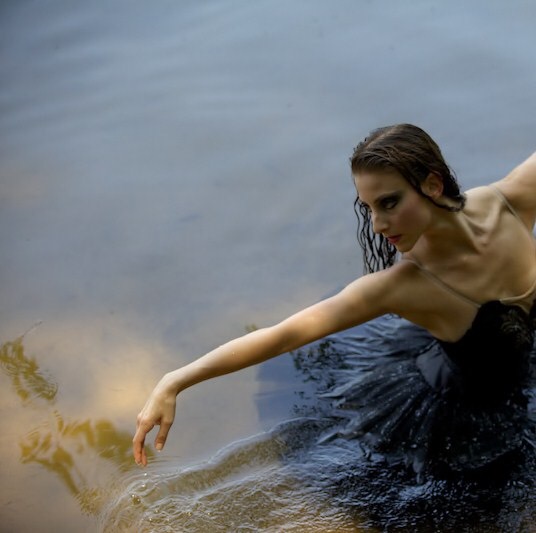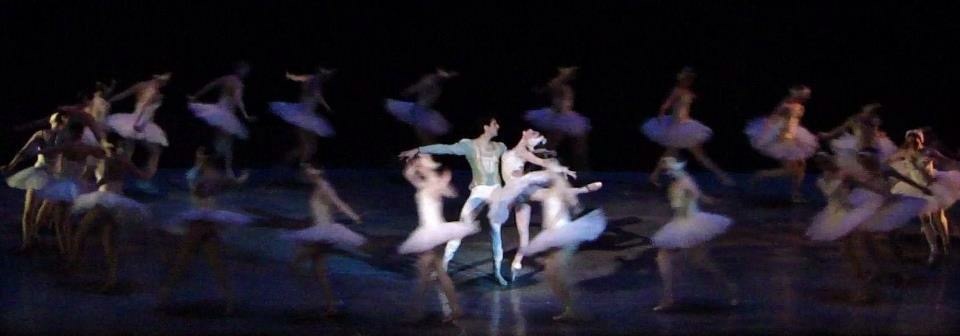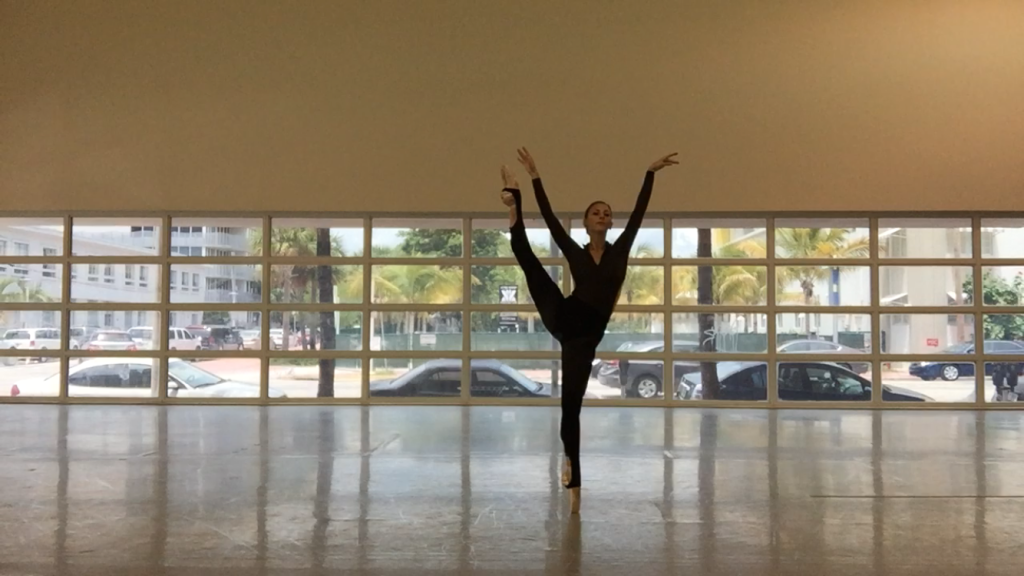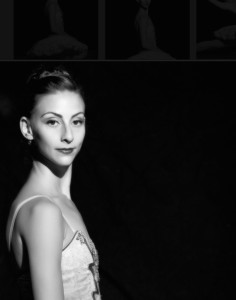Before I could even understand the true meaning of ballet, I dreamed about dancing in Swan Lake. I would even fall asleep listening to the music of Tchaikovsky. In 2001, my mom took me to see a performance of American Ballet Theatre’s Swan Lake. Paloma Herrera danced the principal roles of Odette and Odile. I was so completely entranced. That performance solidified my love for dance.

Years later, while I was dancing with Alabama Ballet, I had the opportunity to perform as Odette and Odile in the four-act Petipa/Ivanov version of Swan Lake.
Swan Lake was first was created by Julius Reisinger in 1877, but redeveloped by Marius Petipa and Lev Ivanov in 1895. The Petipa/Ivanov version stands as a base for many versions today.
At the time, approaching dramatic roles was new to me, so I took acting classes to kick start things and break the ice with myself. My coaches Tracey Alvey, Artistic Director, and Roger Van Fleteren, Assistant Artistic Director, were very detail-oriented and working with them, as well as practicing at home, trained me to find emotional harmony with choreography. Tracey would stay after the rehearsal day and go over every step with me so I learned their true meaning. She also taught me how to emote by bringing real-life experiences to the stage. In time, I discovered how to act in the studio and be confident about the artistic choices I made.

Experiencing the development of a character taught me how to approach the dramatic aspect of ballet. Breaking down every moment and creating a story for a character is key for me now. I have grown to love working on roles that allow me to become another person–or creature.
To this day, stepping onstage to perform Odette and Odile has been one of the most rewarding and electrifying moments of my career. Those who are fortunate enough to dance the Swan Queen during their career develop a strong bond with the character. I hope one day I will be given another chance to tackle this role.

I am very excited to be working on Swan Lake again with Miami City Ballet. This time I will be performing as the Pas de Neuf Swan Soloist and as a member of the Swan Corps in George Balanchine’s Swan Lake. This one-act version was created on New York City Ballet in 1951 with an original cast of Maria Tallchief and André Eglevsky. Based on Ivanov’s choreography, it combines the lakeside scenes, Act II and Act IV.
Lourdes Lopez, Artistic Director, and Roma Sosenko, Principal Ballet Master, are working with me closely on capturing the character in this version.
The Pas de Neuf variation was first broken down so I could properly approach the choreography. Then, I was able to carefully add the characteristics I believe a swan to have. It is wonderful to watch a dancer find her true swan because each dancer portrays the creature uniquely. Technically, the Pas de Neuf variation is difficult in that it requires careful foot work. And, although the part involves solo work, I also need to blend with the other soloist and the Swan Corps so we look like a cohesive flock.
Roma is our main Corps coach for Swan Lake. She emphasizes the dynamics needed to properly be in synch with each other. There are twenty Swans and two Swan soloists along with Odette, the Swan Queen. Miami City Ballet has also been given permission to add the four little Cygnets into this production. That’s a lot of dancers depicting swans at the same time. As Roma says, “If it’s right it will look like there are thousands of Swans.”
Working on Balanchine’s Swan Lake has been an incredible opportunity. It adds another layer to my Swan Lake experience.
Miami City Ballet opens its 30th season with Program One from October 23-November 15. Program One is made up of three remarkable works: George Balanchine’s Swan Lake, Jerome Robbins’ Fancy Free, and Liam Scarlett’s Viscera. Widely recognized as the most famous tragic love story, Swan Lake is one of the most popular ballets performed worldwide. George Balanchine’s brilliant version holds true to the classic love story that is Swan Lake. Miami City Ballet performs Program One in Miami at the Adrienne Arsht Center, in Ft. Lauderdale at the Broward Center for the Performing Arts, and in West Palm Beach at the Kravis Center.


Contributor Samantha Hope Galler, a Bedford, Mass. native, spent 13 years training with The Ballet Academy, Inc., under the direction of Frances Kotelly in the Cecchetti Method. She performed six seasons with The Northeast Youth Ballet under the direction of Denise Cecere. She continued training, on scholarship, with Boston Ballet School and received the PAO Merit Trainee Scholarship. She received the NFAA Honorable Mention Award in Ballet. Galler spent summers training at Boston Ballet, Central Pennsylvania Youth Ballet and Boston Conservatory. She danced with Cincinnati Ballet in their 2008-2009 season under the direction of Victoria Morgan.
Samantha spent five seasons with Alabama Ballet under the direction of Tracey Alvey and Roger Van Fleteren. During her tenure there, she was promoted to principal dancer. She had the honor of performing some of her dream roles including Juliet in Romeo and Juliet, Odette/Odile in Swan Lake, The Lilac Fairy in The Sleeping Beauty, The Sylph and Effie in La Sylphide, Myrtha and Moyna in Giselle, Dryad Queen and Mercedes in Don Quixote, the Rancher’s Daughter in Agnes De Mille’s Rodeo. Her Balanchine roles included Dark Angel in Serenade; The Sugarplum Fairy, Arabian and Lead Marzipan in George Balanchine’s The Nutcracker™; and the principal roles in Allegro Brillante and Tarantella. She has also performed in Jiří Kylian’s Sechs Tanze, and Van Fleteren’s Shostakovich and Romancing Rachmaninov, both world premieres.
Samantha joined Miami City Ballet as a member of the corps de ballet in 2014. Since joining Miami City Ballet, Samantha has performed in various roles including as the Sugar Plum Fairy in Balanchine’s The Nutcracker and as the Harp Soloist in Balanchine’s Raymonda Variations.
Follow Samantha on her website and blog.




